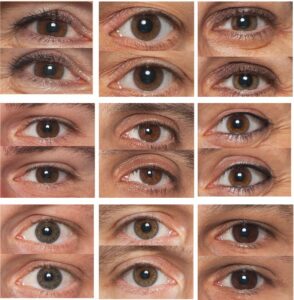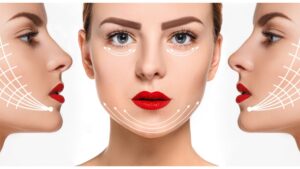Plasma energy-based skin resurfacing for the treatment of blepharoptosis
Plasma energy-based skin resurfacing for the treatment of blepharoptosis: efficacy of the PLASMAGE® device. A prospective multicenter clinical study.
We conducted a prospective clinical study of 176 patients in 9 different clinics throughout Europe and the Middle East to measure the efficacy and tolerability of fractional plasma® energy based device (PLASMAGE® device from Brera Medical Technologies s.r.l., Italy) for the treatment of blepharochalasis.(PLASMA THERAPY)
If this article is interesting to you, you can get more information by downloading the catalog in this case.
PLASMAGE And blepharochalasis
We conducted a prospective clinical study of 176 patients in 9 different clinics throughout Europe and the Middle East. This study was to measure the efficacy and tolerability of fractional PLASMA® energy based device for the treatment of blepharochalasis . (PLASMAGE® device from BRERA Medical Technologies S.R.L, Italy).
PLASMA and ENERGY Delivering
Plasma energy delivery represents an alternative skin regeneration technology that has various benefits over traditional laser skin resurfacing. It has been demonstrated in previous studies that plasma energy applied to upper eyelid could improve collagen production and clinically improved appearance, without any serious adverse events 5,6,7. Histological studies performed on patients with plasma resurfacing have confirmed continued collagen production, reduction of elastosis, and progressive skin rejuvenation beyond 1 year after treatment8.
We used the GAIS score (Global Aesthetic Improvement Scale) as a measure of efficacy. The average GAIS score obtained was 3,21 (+/- 0,61). The score did not significantly vary depending on skin type or age group. The study showed the best GAIS score for the 65 patients with a GAIS average score of 3,46 (+/-0,56).( aged 41 to 50). 21% of patients reported skin redness and enhanced skin sensitivity for a period of 4-6 weeks. 100% of these adverse effects vanished completely. The treatment of blepharochalasis using PLASMAGE® device (by BRERA Medical Technologies S.R.L, Italy) shows promising results. It appears as an interesting alternative to surgical intervention or CO2 laser with low effect and a reduced down time.
Introduction to the use of PLASMAGE
The periorbital region is one of the first areas to show signs of aging .therefore, it is one of the most frequent facial regions receiving cosmetic treatments1. Use of blepharoplasty is routinely for eyelid reconstruction.it can be traumatic to patients and has a long-period of recovery duration.
Hence, non-invasive alternatives for eyelid skin rejuvenation are becoming increasingly popular. Although CO2 lasers are the leading standard for facial skin resurfacing, these devices have several drawbacks including a prolonged healing time, occasional excessive damage to the skin, a risk of hyperpigmentation4 and a reported reluctance of physician to use such device to treat the periorbital area.
PLASMAGE® system delivers the fractional plasma energy with extreme precision, which reduces risk of skin injury and shortens recovery time. (BRERA Medical Technologies S.R.L, Italy).
In study, we investigated for the first time a prospective clinical study of 176 patients in 9 different clinics. (Throughout Europe and the Middle East). The aim was to measure the efficacy and tolerability of fractional plasma® based device for treatment of blepharochalasis in adults.
We used the GAIS score (Global Aesthetic Improvement Scale) as a measure of efficacy and collected from each clinical center complete data for each patient prior to the upper eyelid blepharo treatment, just after and 6 weeks after to measure tolerability and any potential side effects.
Materials and Methods
USE OF PLASMAGE
Study design and ethics This was an open-label, prospective, observational study conducted at nine sites across Europe and the Middle East between January and June 2017. The primary objective was to describe the efficacy of plasma energy therapy delivered by the PLASMAGE® device (Brera Medical Technologies S.R.L, Italy) for treating blepharochalasis in adults. The study was performed in accordance with the Declaration of Helsinki and national regulations and in compliance with Good Clinical Practice with the International Conference on Harmonization Guidelines for Good Clinical Practice. All participating subjects provided their written informed consent. This observational study required no Independent ethics committee approval. During routine clinical practice.
Healthy adults 35−74 years of age with blepharochalasis were enrolled by investigators during routine consultation for eyelid reconstruction. Subjects had to have a Fitzpatrick skin Phototype of II-III-IV. Subjects could not have had laser or radiofrequency treatments to the periorbital area within the last 4 weeks, could not be planning to have any botulinum toxin, fillers, or other cosmetic procedures for the duration of the study in the periorbital area, and could not have generalized disorders of muscle activity, autoimmune disease, or infection around the eyes. Women could not be pregnant or breastfeeding.

PLASMAGE and effects of blepharoplasty(PLASMA therapy)
Results
. During routine clinical practice, treating physicians enrolled 240 subjects total, of which 176 (73%) completed the study according to protocol.
You can gain access to full article by clicking the link below:






User Comments
Your feedback is valuable to Afa. Please write your comments for us.